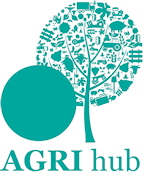The Royal Bath & West Show has played host to many breed societies’ national shows, and this year it will be proudly hosting the Southdown Sheep Society National Show.
Livestock owners take great pride in the appearance of their showing animals, with a lot of work going into preparing them for showing. For Jonathan Long, President of the Southdown Sheep Society, this is a process his family is well-versed in, having kept a pedigree Southdown flock for the past 70 years. He also has a more recent flock of pedigree Blue Texels as well as a commercial flock.
The Society started its national show in 2012, explains Mr Long. “We host it in a different place every year, we find this encourages our members to make the journey and take part.
“We personally try to enter all the classes if we can,” he adds. “At previous national shows, we have won the championship twice and reserve a couple of times, too. We have also won interbreed titles across the country.”
Show preparation starts before the lambs are even conceived. “We start getting our sheep ready five months before they are born,” he says. “If you don’t get the breeding right with an optimal genetic combination, it’s not going to work.”
The physical preparation begins a month before the show. “We clip the sheep’s belly and back and give them a cold-water wash. A fortnight later we give them their first dress, which involves carding (combing) and trimming the fleece. In the week up to the show we dress them again. After they have travelled to the show, they might get a final tidy up if they need it.
“It’s all about enhancing the good bits – and hiding the not so good bits.”
Having previously acted as a Southdown sheep judge, Mr Long has a good concept of what he needs his sheep to look like. “It’s all about the stature and structure of the sheep,” he says. “They need to be well stood with good legs and feet. The body should be strong with a straight top line. On top of all this, I want them to have a little show ring sparkle.”
When it comes to haltering, Mr Long is very decided. “We don’t personally halter train them; I handle them with my bare hands when showing them. We find that they respond and show themselves better.”
The judge at this year’s national show is Nick Page, flock manager at the Goodwood Estate in West Sussex, where there has been a Southdown flock for centuries, excluding a period between World War Two and the flock’s re-establishment in 2002.
Mr Page has previously judged Southdowns at the Royal Welsh Show in 2023 as well as at the Wayland show in 2015. So, what is he looking for? “They’ve got to stand well on their feet, with good conformation and a correct mouth,” he says. “They need to possess the right breed characteristics like woolly ears and a lovely traditional head.
“They should look so good I want to take them home.”
He maintains that Southdown sheep are an ideal breed. “Their lambs are early maturing and can be finished off grass. They also work excellently as terminal sires and are easy lambing,” he enthuses. “Native breeds will have an important role to play in the future of UK sheep genetics.”
Promoting agriculture and supporting the rural community has always been the raison d’etre of the Bath & West Society. “Backing British farming and championing the rural community is at the heart of our Society,” says Jess Chiplen, head of shows at the Bath & West Society.
“National shows, and livestock showing in general, remains incredibly influential and important to the progression of genetics as well as the sale of livestock and the preservation of our wonderful native breeds.
“Hosting national shows at the Royal Bath & West Show is just of the many ways we work to profile the tapestry of the livestock sector.”





